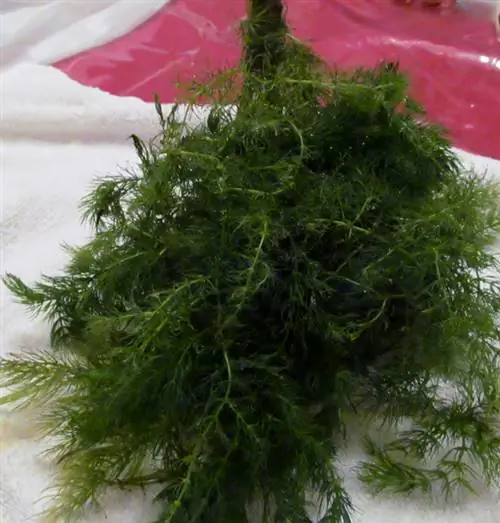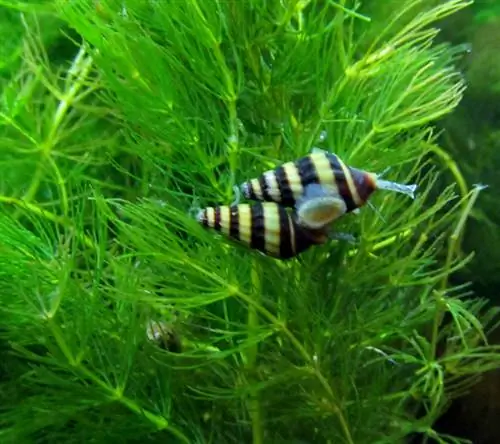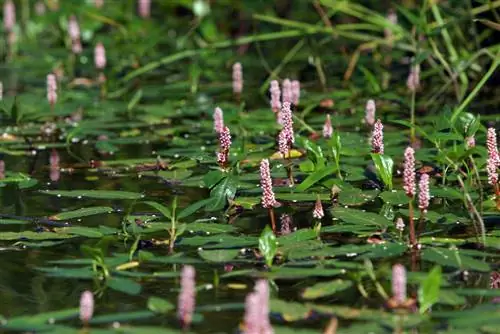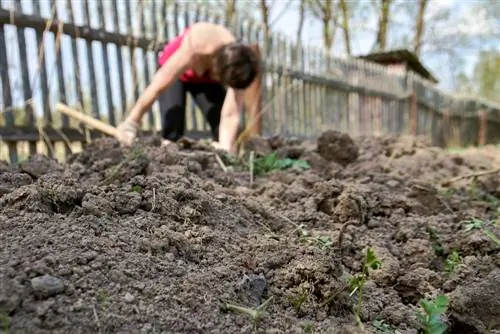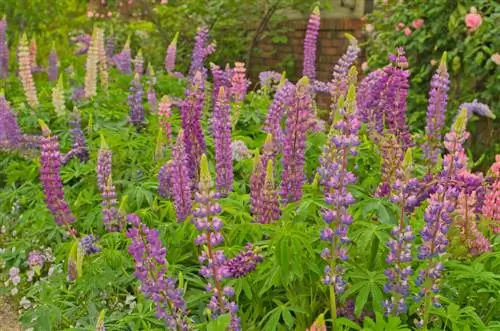- Author admin [email protected].
- Public 2023-12-16 16:46.
- Last modified 2025-01-23 11:20.
The hornleaf is a rootless aquatic plant that thrives in stagnant or slightly moving water and improves the water quality there. The water temperature does not play an important role. The hornleaf is therefore well suited for garden ponds.
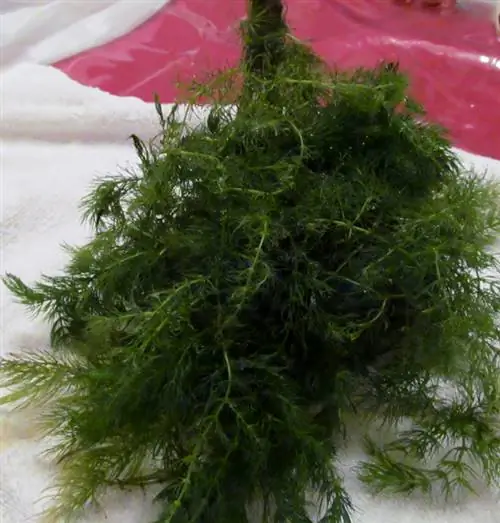
How to plant hornleaf in the garden pond?
The hornleaf is a rootless, evergreen aquatic plant that helps improve water quality in garden ponds. It is simply placed in the pond, grows rapidly and produces oxygen. Pay attention to the nutrient supply and remove unnecessary plants if necessary.
How to plant a plant without roots?
The hornleaf is not planted but simply placed in the pond. There it sinks a little deeper on its own or floats directly on the surface of the water. It absorbs all the nutrients it needs directly from the water via root-like extensions and uses it to produce plenty of oxygen. This is particularly interesting when fish live in the pond.
The hornleaf grows rapidly and clears the water as long as it is sufficiently supplied. Once it has done its job well, it sinks to the ground and decomposes there. This causes the pond to become silted up easily.
Although there are still some hornleaf plants left that purify the water again, the effect diminishes over time. You can prevent this cycle by limiting the spread of the horn leaf in good time. To do this, if necessary, they fish out unnecessary plants and prune those left in the pond.
Does the hornleaf fit in every pond?
If the water quality in your garden pond is already good or very good, then you don't actually need hornleaf at all. On the contrary, it could even harm your pond, at least if it is also nutrient-poor. Because if the horn leaf does not receive enough nutrients, it sinks to the ground and decomposes there. This leads to increasing siltation of the pond, without you having any benefit from the hornleaf.
If your garden pond suffers from large amounts of filamentous algae, then it doesn't make sense to add hornleaf there either. It would clump with the filamentous algae and thereby suffocate. Fish off the filamentous algae as much as possible before you bring the hornleaf into the pond, then it can do its job well there.
The most important things in brief:
- evergreen
- no root formation
- floating freely
- hardy
- water improving
- oxygen producing
- easy care
Tip
Do not plant the hornleaf in the bottom of the pond because it has no roots. Instead, it absorbs nutrients directly from the water via root-like extensions.

